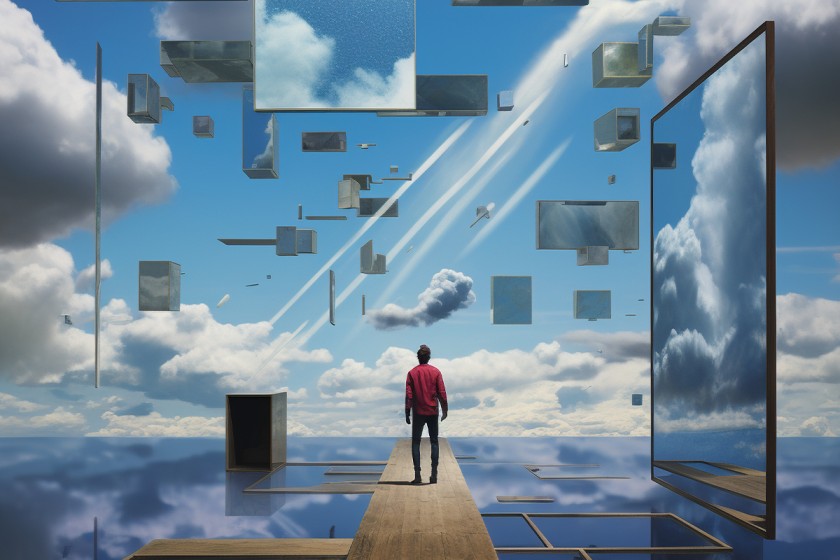For decades, the design world has clung to a romantic notion: that design is purely subjective, a mystical dance between intuition and inspiration. As a seasoned professional who has witnessed the ebb and flow of countless trends, I’m here to tell you that this belief, while comforting, is now officially obsolete. The silent revolution is here, and its name is Artificial Intelligence.
We are at a pivotal moment in the history of design, a paradigm shift as significant as the invention of the printing press or the advent of digital design software. AI is not just another tool in our arsenal; it is fundamentally reshaping the very essence of how we create, evaluate, and understand design. The age of purely subjective “I-know-it-when-I-see-it” design is giving way to a more objective, data-driven, and powerfully efficient creative process.
The Visual Evolution: From Gut Feeling to Algorithmic Precision
Remember the days of endless debates in boardrooms over color palettes and layout choices, often won by the most eloquent or senior voice in the room? AI is systematically dismantling this subjective battlefield. By leveraging vast datasets of user behavior, engagement metrics, and aesthetic preferences, AI introduces a layer of objectivity that was previously unimaginable.
We are witnessing a visual evolution, driven not by the whim of a few, but by the collective intelligence of the many, analyzed and interpreted by sophisticated algorithms. AI can now predict with astounding accuracy which design elements will resonate most effectively with a target audience. A/B testing, once a cumbersome process, can now be simulated at scale, providing clear, actionable insights before a single pixel is pushed in the final design.
This doesn’t mean the designer’s eye is irrelevant. Instead, it elevates our role. We are no longer just creators of aesthetically pleasing visuals; we are strategic thinkers who can interpret AI-driven data to make informed decisions. Our creativity is now augmented by a powerful analytical partner, allowing us to move beyond “what looks good” to “what works best.”
The Unseen Hand: Key Plays by AI Agents in the Design Process
The true game-changer in this new landscape is the rise of AI agents – intelligent systems that can understand, reason, and act on our behalf. These are not just passive tools; they are active collaborators in the creative workflow.
Here’s how AI agents are making their mark:
- Generative Design at Scale: Need to explore hundreds of logo variations, website layouts, or product packaging concepts in minutes? AI agents can generate a vast array of options based on a set of predefined parameters and goals. Platforms like Midjourney, DALL-E, and Adobe Firefly are prime examples of how generative AI is transforming initial ideation, allowing designers to explore hundreds of visual concepts in moments. This frees up designers from the drudgery of repetitive iteration and allows us to focus on refining the most promising concepts.
- Intelligent Asset Management: The days of sifting through disorganized folders of stock photos and icons are numbered. AI-powered asset management systems can automatically tag, categorize, and even suggest relevant visuals based on the context of your design. Enterprise-level Digital Asset Management (DAM) systems, increasingly powered by AI, are revolutionizing how designers access and organize their visual libraries, automatically tagging and suggesting assets based on project context – think of advanced features in solutions like Adobe Experience Manager Assets.
- Predictive Analytics for User Experience: AI agents can analyze user interaction data in real-time to identify friction points and suggest improvements to the user experience. Tools like Contentsquare, Hotjar (with AI features), or even Google Analytics 4 (GA4) leverage AI to provide deeper insights into user behavior, identifying patterns and predicting areas for UX improvement, moving beyond raw data to actionable recommendations. This allows for a continuous cycle of optimization, ensuring that designs are not only beautiful but also intuitive and effective.
- Personalization at an Unprecedented Scale: AI enables us to move beyond one-size-fits-all design. By understanding individual user preferences and behaviors, AI agents can dynamically tailor visual experiences, creating a more engaging and relevant interaction for each person. For example, content management systems (CMS) and marketing automation platforms with AI capabilities, such as Optimizely (formerly Episerver) or Salesforce Marketing Cloud, are enabling designers to create dynamic visual elements that adapt to individual user profiles and past interactions, delivering hyper-personalized experiences.
From Whimsical Animation to Stark Reality: AI’s Artistic Versatility
Perhaps the most captivating demonstration of AI’s power is its ability to not only understand but also create in distinct and complex artistic styles. The conversation is no longer about whether an AI can generate an image, but how well it can capture a specific aesthetic, from the enchantingly whimsical to the breathtakingly real.
Take, for instance, the beloved art style of Studio Ghibli. The hand-drawn warmth, the vibrant nature scenes, and the expressive characters are all hallmarks of this unique aesthetic. Now, AI agents can be trained on this specific visual language. By analyzing the entire Ghibli filmography, these agents can learn to generate new artwork that is strikingly evocative of the original masters. They can create idyllic landscapes, charming characters, and scenes imbued with that signature sense of wonder, all at the prompt of a designer. The impressive stylistic versatility demonstrated by tools like Midjourney and Adobe Firefly allows them to grasp and recreate intricate artistic nuances.
On the other end of the spectrum, AI is blurring the lines between reality and digital creation with its ability to generate photorealistic, cinematic images. By studying the principles of photography – lighting, composition, lens effects, and color grading – AI agents can produce visuals that are indistinguishable from a high-end photograph. This has profound implications for everything from product mockups and architectural visualizations to concept art for films. The ability to generate a “real” photograph of a scene that has never existed is a powerful tool for any creative professional.
The New Creative Renaissance: A Partnership, Not a Replacement
The fear that AI will replace human designers is a common, yet misguided, one. The reality is far more exciting. AI is not our competitor; it is our collaborator. It handles the laborious, time-consuming tasks that have historically bogged down the creative process, freeing us to focus on what we do best: strategic thinking, emotional intelligence, and storytelling.
The future of design is a symbiotic relationship between human creativity and artificial intelligence. By embracing this partnership, we can create designs that are not only more effective and efficient but also more innovative and impactful than ever before. The subjective era of design may be over, but a new, more powerful, and objective age of creativity is just beginning. And for a seasoned professional like myself, that is a prospect that is nothing short of exhilarating.
Closing Thoughts
The end of one era simply heralds the dawn of another. As designers, our canvas has expanded, our brushstrokes empowered by data, and our potential for impact limitless. The true artistry now lies in harnessing this intelligent partnership to craft not just designs, but experiences that truly resonate. The era of truly intelligent design has arrived.

Author
Siddarthan R | Associate Manager of Design | Neurealm
Siddarthan R, an award-winning Associate Manager of Design at Neurealm, has over 11 years of experience crafting compelling visual narratives. He translates complex ideas into engaging, results-driven designs. He is passionate about integrating cultural insights and travel into storytelling. Utilizing AI design tools to enhance efficiency, he consistently delivers high-quality designs from concept to delivery, boosting brand visibility and user engagement through strategic implementation.
Proficient in Adobe Creative Suite, branding, and design principles, Siddarthan’s travels and cultural understanding inform his goal: designing for mass audience comprehension, not personal preference.


